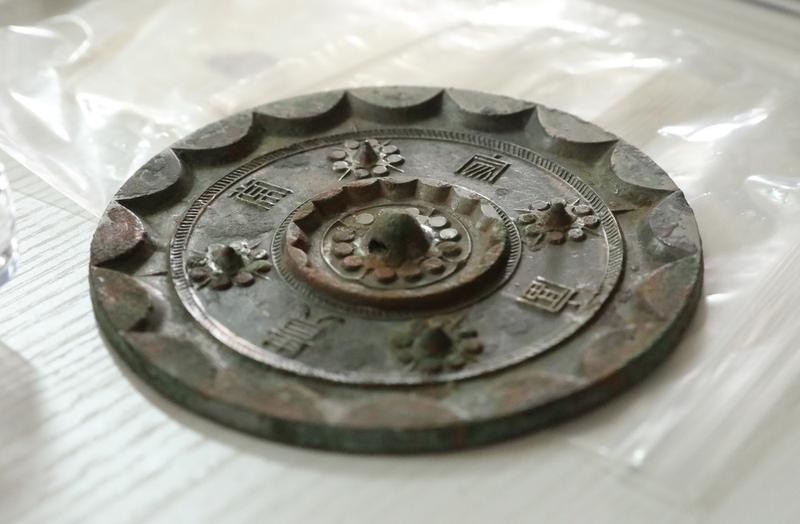 A bronze mirror recently excavated from Xixian New Area, Shaanxi province. (YANG YIMIAO / XINHUA)
A bronze mirror recently excavated from Xixian New Area, Shaanxi province. (YANG YIMIAO / XINHUA)
XI'AN-Chinese archaeologists have recently unearthed more than 80 bronze mirrors preserved in a large-scale cemetery about two millennia ago in Northwest China's Shaanxi province.
Situated in the Gaozhuang township of Shaanxi's Xixian New Area, the graveyard is home to more than 400 tombs and a collection of pottery and bronzeware that can be traced back to the early Western Han Dynasty (206 BC-AD 24).
The bronze mirrors, with diameters ranging from 8 centimeters to 22.1 cm, were discovered during the recent excavation of the site, according to the archaeologists. They are believed to have been manufactured mainly between the late Warring States Period (475-221 BC) and the late Western Han Dynasty.
 A conservator cleans one of the mirrors. (YANG YIMIAO / XINHUA)
A conservator cleans one of the mirrors. (YANG YIMIAO / XINHUA)
The high gloss of some of the mirrors was well-preserved, as researchers found one still displayed a clear reflection.
The researchers also found that most of the mirrors were placed close to the head, or around the upper body, of the tomb owners, with inscriptions showing people's expectations of a better life.
According to historical records, in order to ensure the construction and service of the emperor's mausoleum as well as to better supervise the aristocrats, Liu Bang, founder of the Han Dynasty (206 BC-AD 220), set up a centralized residential area for the nobility, which was located about 4 km from the cemetery.
Therefore, the ancient tombs are believed to belong to the dynasty's upper-class residents, according to the researchers.


